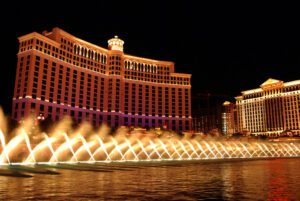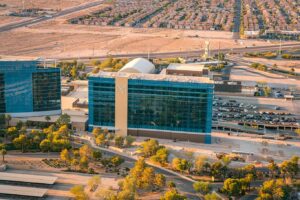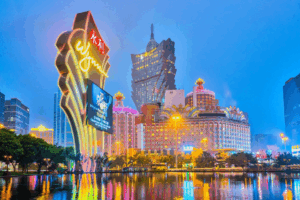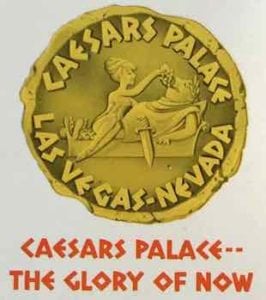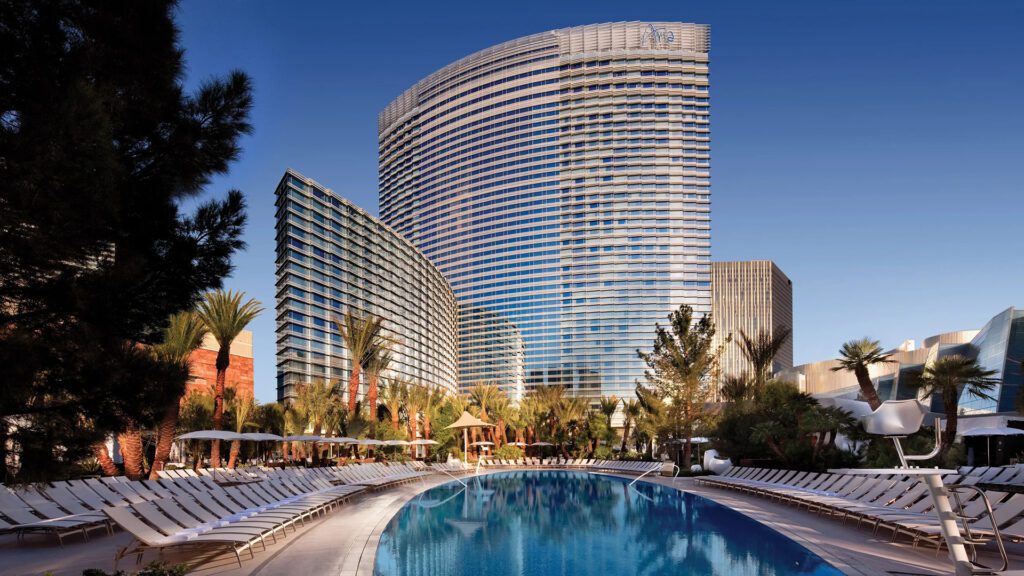MGM Resorts reported earnings this week. You can see details about the financials here.
I listen to earnings calls for news beyond the numbers. When executives speak, they add context and insights that aren’t included in the press release, which is focused solely on financial performance.
During the call, the company shared updates about additional room renovations and expressed strong satisfaction with its partnership with Marriott. MGM is selling a significant number of rooms through this relationship. The number is kind of mind-bending for those who are not closely in tune with how many rooms visitors actually book for Las Vegas every week.
One thing that stood out is that this is more than just a rewards program partnership. It’s a much deeper integration.
You may recall that MGM rebranded The Hotel/Delano to W Las Vegas last year. That was part of this partnership, and it likely won’t be the last time we see a change like this.
MGM Resorts has been laser-focused on enhancing the performance of its high-end properties in Las Vegas over the past year or so. The ABC casinos (Aria, Bellagio, Cosmopolitan) are receiving most of the upgrades, while the lower-tier properties continue to be streamlined.
Aria and Cosmopolitan Room Renovations
More than 4,000 rooms and suites at MGM Grand are being renovated this year. Some of the updated rooms are already available. As you’d imagine, the renovated rooms cost more than the older versions, and complimentary stays are more likely to be offered in the unrenovated rooms unless you’re an upper-tier MGM Rewards member.
During the call, MGM Resorts confirmed that it will finally renovate the base rooms at Aria next year. These rooms have been showing noticeable wear and tear over the past few years. MGM has prioritized upgrading the award-winning Aria Sky Suites over the past few years instead of the main hotel room product.
The Cosmopolitan is slated for a room remodel in 2027. While the current rooms are still in decent shape, some attention is needed. As previously mentioned, newly upgraded rooms tend to command higher rates, so MGM is likely to see a quick return on this investment.
Details About MGM Resorts’ Partnership with Marriott
Throughout the earnings call, a couple of different MGM executives expressed their satisfaction with the Marriott partnership. While many are familiar with CEO and President Bill Hornbuckle, CFO Jonathan Halkyard also played a prominent role in the discussion.
Here are some notable quotes directly from the source:
- Bill Hornbuckle on Marriott bookings:
“We are also seeing continued growth from our existing exclusive Marriott collaboration, which we still expect will account for 900,000 room nights this year, up from 660,000 last year.” - Jonathan Halkyard on occupancy impact:
“The value of the Marriott strategic relationship was notable this quarter, helping to achieve record first-quarter occupancy.” - Halkyard on current bookings:
“The Marriott partnership is performing exceptionally well. We already have, just through April, 440,000 room nights booked. Do the math—it’s over 20,000 room nights per week through the Marriott channel. These customers are very accretive compared to the ones they’ve replaced.” - Halkyard on conferences and group bookings:
“Now, if you’re attending a large meeting or convention and staying with us, you can earn Bonvoy points. That makes us very appealing to meeting planners—and attendees, too. I think this will really turbocharge results from the Marriott deal.” - Halkyard on Canadian business:
“Canadian business is down, but we’ve been able to make up for it with Marriott blocks and casino blocks.”
There was one last note about the Marriott-MGM partnership towards the end of the call that surprised me, and that gets its own section.
Vdara or NoMad Could Be Replaced with a Marriott-branded hotel
Earnings calls can get tedious if you’re not interested in financial metrics, but I’m always listening for things that may matter to Las Vegas visitors.
One comment toward the end of the call caught my attention. It almost felt like a slip, though the tone implied everyone was in the loop.
When asked about expanding the Marriott partnership, CEO Bill Hornbuckle said:
“It’s exceeded it. I think you know this by the deal. We’ve obviously committed to [indiscernible] over the first 10 years. We have yet another property here in Las Vegas we need to commit. So we’re spending time and energy eventually thinking about that.”
I double-checked the transcript to confirm what I heard. There hasn’t been much chatter about another MGM-Marriott co-branded property similar to the new W Las Vegas.
Currently, MGM operates three “hotels within hotels” in Las Vegas:
- The Signature at MGM Grand
- NoMad at Park MGM
- Vdara at CityCenter/Aria
It’s possible that NoMad could be rebranded—rumors have circulated for a while—but Vdara may be the more likely candidate.
Given MGM’s focus on its luxury ABC casinos, Vdara seems ripe for a refresh. It’s a great value on the Strip, but it’s beginning to show its age.
Rebranding and upgrading Vdara would allow MGM to raise room rates while modernizing the hotel. Sadly, that means the value this property offers will likely be gone with higher prices.
Which Marriott brand might fit a standalone property on the Vegas Strip? Here are some candidates:
- JW Marriott
- Ritz-Carlton
- The Luxury Collection
- Renaissance
- Le Méridien
Which do you think would work best for Vdara, if that’s the next Marriott-branded MGM hotel?
There’s no timeline for this yet, and this is still speculative. But keep your eyes peeled for developments in the MGM-Marriott partnership.
MGM Rewards Surpasses 50 Million Members
MGM Rewards now has more than 50 million members. The program has grown by more than 50% since 2020.
That growth didn’t happen by accident. MGM’s strategy has long aimed to leverage its omnichannel presence. Anyone who signs up for a BetMGM sports betting account is automatically enrolled in both BetMGM Rewards and MGM Rewards.
This integration has always been part of the bigger picture. Casino operators frequently emphasize that omnichannel customers (those who engage with both digital and physical properties) are significantly more valuable than those using only one channel.
Marc grew up on the mean streets of the South Bronx. He's the rare combination of Yankees and Jets fan which explains his often contrarian point of view. He learned about gambling at a young age working down the street from a bookie who took action on anything from the mainstream sports to the last three digits of the purse for certain horse races. Yeah, that's a thing. Today Marc is a freelance writer and social media consultant which allows him to work anywhere there's a wifi signal. This allows him to work from the sportsbook at Red Rock Resort or the food court at The Venetian where you’ll find fast and free wifi. Writing about steak, booze, gambling and Las Vegas is a tough job but somebody has to do it.




